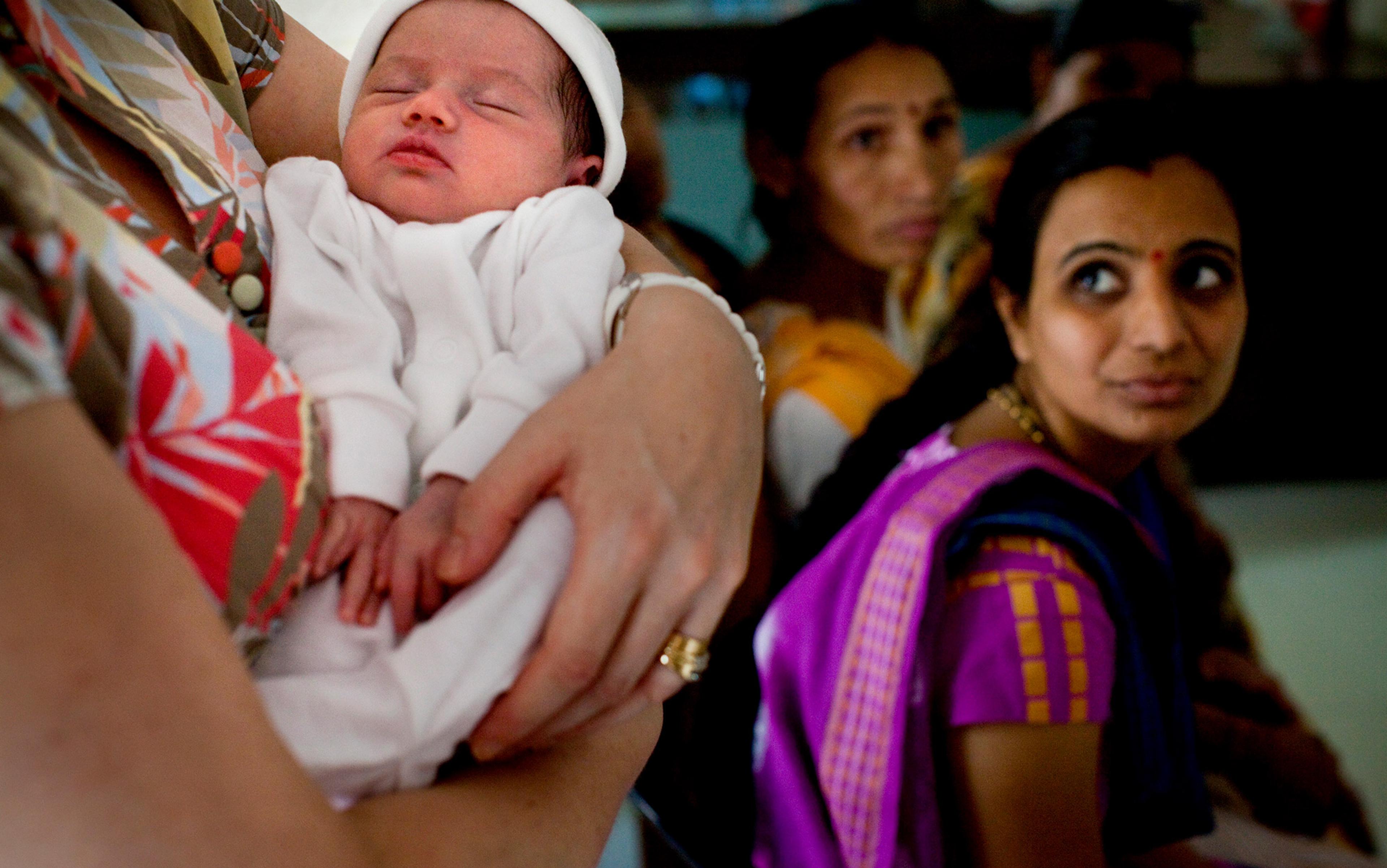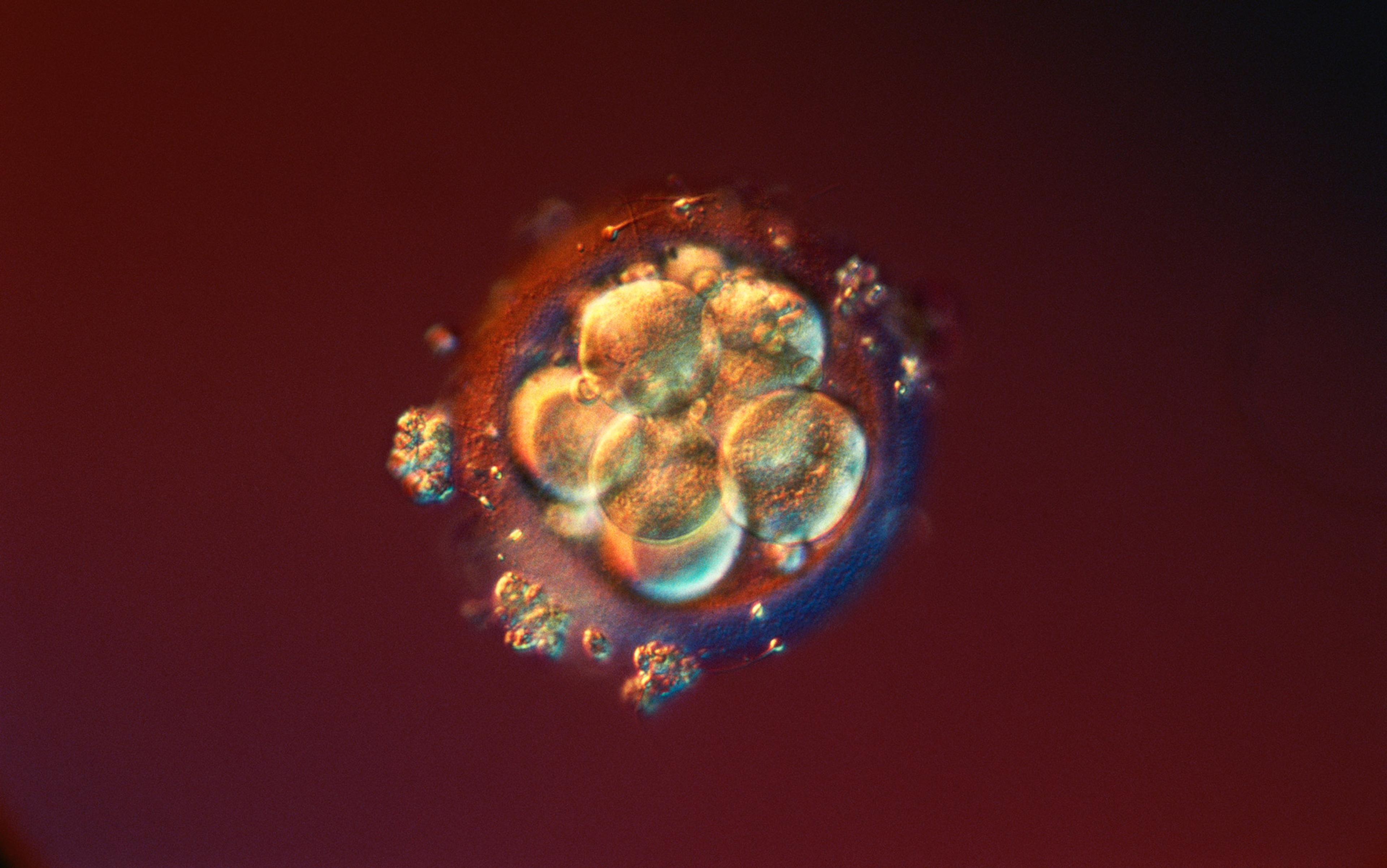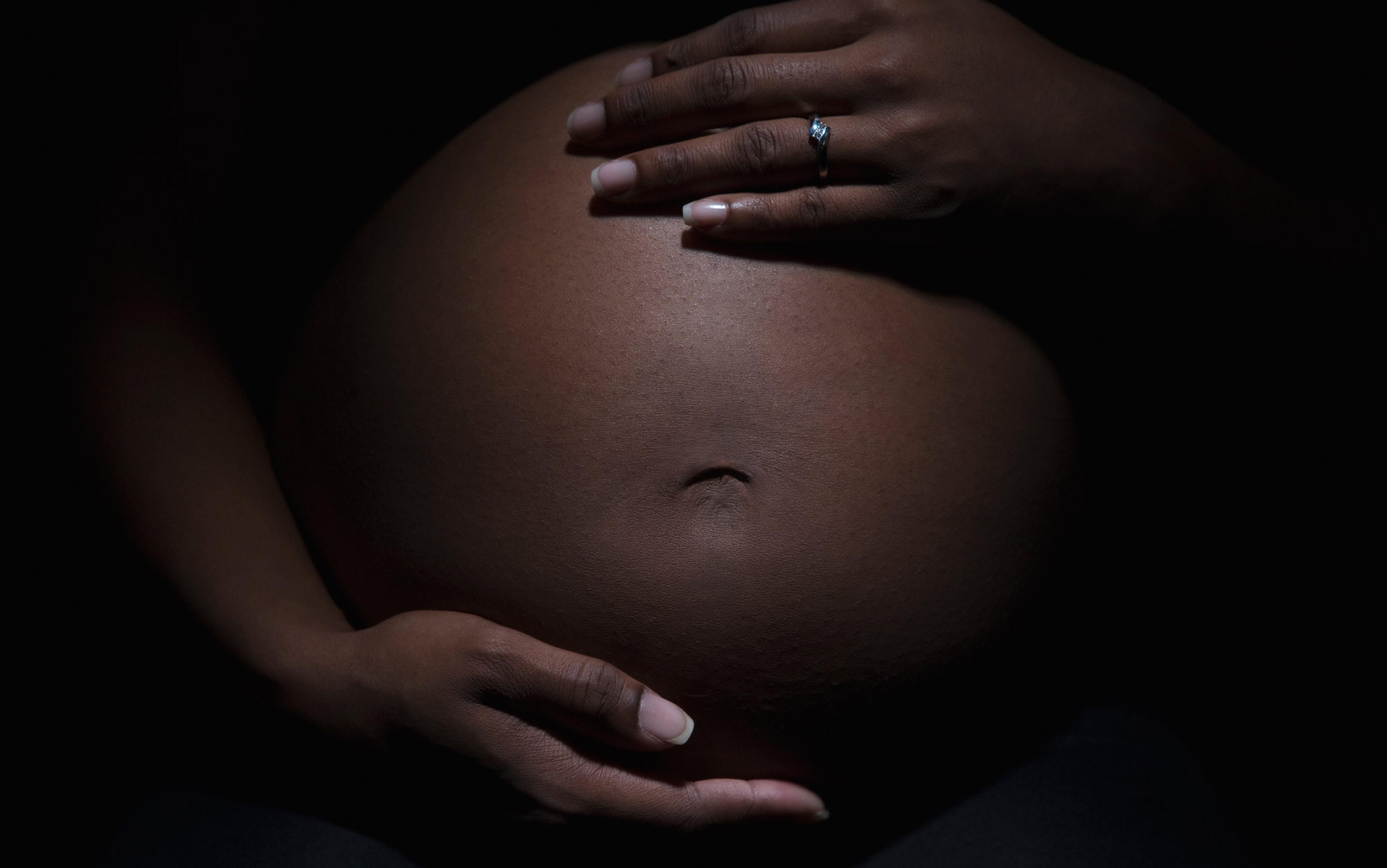Feminist critics first met in vitro fertilisation (IVF) developments with suspicion. Gena Corea argued that assisted reproductive technologies (ARTs) would reduce women to ‘Matter’ and represented a troubling medicalisation of the reproductive process that was poised to harm women. Corea made prescient predictions that markets in wombs and eggs would develop along classed and racialised lines. Writing in her book The Mother Machine (1985), she estimated that there would be a demand for the wombs of women of colour but not for their donor eggs, in a manner continuous with racism. Corea also observed that a woman’s economic situation was central to her ‘will’ to engage in commercial surrogacy.
A generation or more later, Corea’s claims have been borne out by the development of surrogacy industries in the Global South, which are hotspots for ‘reproductive tourism’, attracting wealthy international consumers. Ethnographic research reveals that surrogates typically exhibit socioeconomic vulnerabilities and palpable financial motivations. They are poor and want to make money. Meanwhile, countries in Europe including Spain, the Czech Republic and Greece, have emerged as popular centres for compensated egg donation.
In her book Women As Wombs (1993), the feminist theorist Janice Raymond pointed to the marketised development of ARTs and the cultural expectation that all women should mother. She saw these as constructing women’s choice to engage in fertility procedures. Corea and Raymond shared a scepticism about ARTs. They called attention to their experimental nature, citing the harm previously inflicted upon women by the medical profession (through practices such as forced sterilisation, medically unnecessary hysterectomies, and harmful birth control) and advised caution toward further reproductive interventions in the name of fertility.
While extremely rare, IVF can still lead to serious adverse outcomes. Pregnancies through IVF are considered higher risk, and may lead to gestational diabetes, premature delivery, low birth weight, and miscarriage. The use of fertility drugs in IVF to induce egg production can cause ovarian hyperstimulation syndrome: last year in India, a seemingly healthy egg-donor died while doctors were retrieving her eggs.
ARTs such as IVF are often viewed as a ‘treatment’ for infertility. Infertility, however, turns out to be difficult to define. A prima facie attempt might see it as the inability to conceive and reproduce through natural means. Yet, from the outset, Raymond and other feminist theorists questioned the claim that infertility is a disease, and instead noted how infertility diagnoses rose in tandem with the proliferation of commercially motivated infertility specialists. Raymond also drew an analogy with the classification of disability, pointing to the way in which disability rights activists maintain that physical handicaps should not be treated as diseases. Philosophers of medicine continue to debate the nature and definition of ‘disease’.
The naturalist position in this debate holds that we can maintain purely descriptive definitions of disease and health. In the 1970s, Christopher Boorse’s biostatistical theory of health set out the terms of naturalism, and it remains influential. The naturalist view focuses on the idea of typical, or species-normal, biological functioning. A fundamental grounding claim is that the human body comprises organ systems that have teleological natural functions. These organ systems might depart from their natural functions in various ways. Some of these departures are harmful, and these are classified as diseases. Disease is thus defined as a harmful deviation from species-normal biological functioning. On the naturalist view, the determining of bodily malfunction is an objective matter.
Normativists argue that health and disease are essentially value-laden phenomena. It is impossible, normativists maintain, to assess health, disease or disability without making value judgments, which are often concealed (even from those making them), and so health, disease and proper bodily functioning are anything but objective. In support of their position, normativists point to the historical and cultural nature of disease classification. For example, some conditions that human societies have considered and treated as diseases have been discredited as unscientific or discriminatory, such as ‘hysteria’. Masturbation was until very recently considered a disorder that could be treated by surgical intervention through circumcision. Homosexuality remained classified as a disease by the World Health Organization until the publication of the ICD-10 in 1992. The evolving ways of thinking about mental health illustrates the expansion and development of human understanding of health and changing social norms.
So, are people who cannot conceive through unprotected heterosexual intercourse suffering from a disease? On the naturalist view, statistical definitions of ‘normal’ functioning depend on a reference class, a natural class of organisms of uniform functional design, such as an age group of a sex of a species. Whether your body is normal depends on which other bodies you’re comparing it with. On Boorse’s biostatistical model, infertility is a disease where an individual falls short of the statistical norm in ability to conceive, given their age and sex. The philosopher Emily McTernan asks us to consider that the average age of a woman seeking IVF on the NHS is 35, and one-third of those who receive treatment are over 37. Such a candidate for IVF, who is unable to conceive through natural means, may not be exhibiting a clear failure of ‘normal’ functioning. This is because, it is normal, statistically speaking, for ageing to lead to a loss of certain capabilities. The candidate’s reference class – other 35- or 37-year-old women – might similarly be comprised of women struggling to conceive. Thus, on the biostatistical model of disease, infertility can be, in certain ways, quite statistically normal.
On the normativist view, if infertility is to be considered a disease, it will be classified as such through appealing to some value. For example, a normativist might claim that there is a hidden premise in operation about valuing genetic reproduction in attempts to classify infertility as a disease. So, when it is argued that infertility limits health, in the manner of disease, this might be further explained in terms of inhibiting the ability to achieve one’s vital goals (reproduction). The hidden premise, according to the normativist, is that it is good or desirable to genetically reproduce. Thus, normativist reasoning makes explicit the function of a norm towards desiring reproduction. As a result, it might be argued that reproduction is seen as a vital goal due to the dominance of pronatalist cultural norms surrounding childbearing and genetic kinship. It is because of such norms that people feel the need to have their own genetically related children, and that infertility is seen as ‘malfunctioning’ according to one’s vital goals.
The normativist might argue that it is possible to imagine a scenario in which the strength of such norms is reduced. In such a scenario, fewer people would hold genetic reproduction to be a vital goal, resulting in fewer people failing to meet this goal, thus leading to a reduction in the incidence of this ‘disease’. The possibility of this reduction attests to the contingent and norm-based nature of the infertility-as-disease position. In support of their claims, a normativist may also point to the non-universal nature of the norms towards genetic reproduction. For example, some Indigenous communities exhibit mating relationships of kinds other than the nuclear family unit, and do not place weight on two-parent genetic ties, or on just having one ‘mother’.
The dominance of the nuclear family as a mode of organisation limits access to alternative modes of kinship
The normativist is bound to be met with the challenge that we live in the here and now, in circumstances where great emphasis is placed on genetic parenthood and reproduction. We cannot reason ourselves out of the pain of childlessness. Reproductive technologies, whether they ‘treat’ a ‘disease’ or not, are a vehicle of hope and fulfilment for many. Classification issues notwithstanding, infertility continues to be an issue of immense social significance. Research suggests that the psychological impact of infertility is greater upon women than men, and that fertility treatments, particularly unsuccessful ones, are associated with high depressive scores for women undergoing them.
Yet, rather than viewing the advancement of ARTs as the solution to this suffering, feminist theorists such as Corea and Raymond sought to question why it is that infertility causes such distress, and have proposed ways of addressing it that confront the totality of the situation, that is, the situation of women under patriarchy. Infertility-related distress, they argue, is, at least in part, due to ‘ideal’ notions of femininity that permeate our culture and place significant emphasis on motherhood and childrearing. Such recurrent messaging causes pain when one feels unable to conform to this model. Further, the dominance of the nuclear family unit as a mode of social organisation limits access to alternative modes of kinship that could provide other options for feeling fulfilled in terms of family life.
These feminist critics attributed infertility-related distress to various systemic features of patriarchal society. Many academic discussions in contemporary anglophone philosophy instead tend to emphasise an individual’s ‘reproductive autonomy’ to engage in infertility procedures as they see fit. This rendering of the matter to a question of individual choice follows the rational consumer paradigm of orthodox economics. That is, the liberty to make decisions free from interference or restriction is a guiding value, and more choice is better than less. On the one hand, various histories of state-imposed population control (anti-miscegenation laws and forced sterilisation in the United States are just two examples), showcase the harms that can result from state interference with individuals’ reproductive decisions. Liberals and feminists alike thus often see negative freedom – to be free from such state interference – as a cornerstone of reproductive autonomy. Correspondingly, it is often taken as axiomatic that reproductive autonomy involves a positive element, grounding access to certain services, such as abortion and family planning clinics. In such cases, the value of reproductive autonomy is clear.
Relatedly, the legal scholar and bioethicist John Robertson has pioneered the idea of ‘procreative liberty’, arguing in Children of Choice (1996) that full procreative freedom would include both the freedom not to reproduce and the freedom to reproduce when, with whom, and by what means one chooses. This latter element involves maintaining technological control over reproduction and positive access to assisted reproductive procedures, as a matter of freedom.
However, despite the initial appeal of the language of freedom, there is a sense in which making it focal obfuscates salient issues related to the harmful context in which choices are made, as well as how they might collectively make an impact beyond individual cases. To illustrate, respect for reproductive autonomy might be invoked as a justification for permitting access to increasingly risky assisted reproductive procedures. An argument from reproductive autonomy in the context of assisted reproduction might state, for example, that even if a procedure is risky, experimental or possesses a relatively low chance of success, we should respect the reproductive autonomy of the woman choosing to undergo it. She is the best judge of her interests and should be free to choose any such option available to her.
Such appeals to reproductive autonomy organise the philosophical debates surrounding the uterus transplant, an experimental procedure that involves transplanting a donated uterus, typically from a living donor, into a recipient who seeks to ‘experience pregnancy’ and gestate a fetus to term. Recipients might have been born without a uterus or had it removed due to illness. Recent estimates indicate that there have been 40 live births following uterus transplants, and several clinical trials are currently underway. The bioethicist Laura O’Donovan argues that there are limits to when reproductive autonomy can deliver verdicts on the permissibility of reproductive decisions. Potential harms that uterus transplants pose to the live donor, to the recipient and to the developing fetus might constrain an individual’s reproductive freedom. Similarly, one’s autonomy to undergo a uterus transplant might be undermined by social conditioning and pressures to procreate. However, in response to this latter concern, Donovan notes that, generally, we do not seek to influence or curtail an individual’s choice in natural reproduction. In such cases, we do not seem to question the authenticity of a seemingly autonomous decision. Thus, she suggests, we have no more reason to do so with regard to uterus transplants as a treatment option.
Yet this general acceptance of all reproductive decisions in the context of harmful, essentialising norms is precisely what Corea, Raymond and others criticise. They would not have viewed such decisions as an unobjectionable, neutral benchmark from which to permit further reproductive risk. Concerns regarding social pressure and compromised autonomy come to the fore, and indeed may be heightened, in the context of uterus transplants, which pose increased risks, compared with natural reproduction and established ARTs.
To what extent can reproductive autonomy justify a procedure that appears to involve clear harm?
There are clear risks involved in uterus transplants, both to uterus donors and to recipients. The donor undergoes risks similar to hysterectomy, such as haemorrhage, infection, and bladder injury, and the longer procedure time for living uterus donation may increase these complication rates. The majority of reported complications have been urinary tract injuries due to the complex and precise dissection required in the pelvic floor. Beyond these immediate surgical complications, hysterectomy for uterus donation may also have long-term medical consequences that affect quality-of-life. For example, premenopausal women may be at increased risk for ovarian failure after hysterectomy and may require hormone replacement therapy for early menopause. There may also be some risk of sexual dysfunction after hysterectomy.
The recipients of uterus transplants also face risk. As with any transplant, patients face the general risks of surgery, transplant rejection, and infection. They are also required to take immunosuppressant drugs until the womb is removed again after successful gestation, which generally leave patients at higher risk of death, including a lasting increased risk of certain cancers. Transplant recipients will undergo high-risk pregnancies requiring close monitoring. To what extent, therefore, can reproductive autonomy be invoked as a justification for a procedure that appears to involve clear harm? Setting aside any risks that are hypothetical, there are unavoidable, tangible harms: the surgery and recovery and use of immunosuppressants all turn a healthy person into a patient. This seems particularly concerning in the case of uterus transplants, where surgery does not attend to saving life and medical need but, rather, to the desire to gestate a fetus.
In her book Making Babies: Is There a Right to Have Children? (2002), the philosopher Mary Warnock, who had a guiding role in the development of UK legislation on surrogacy and assisted reproduction services, argued that it was difficult to ground access to such services through the language of rights. To say that one had a right to children was to employ no more than a rhetorical device. Rather, it makes more sense to provide these services in relation to social welfare. To extend Warnock’s argument to this discussion, we might consider that, even if infertility presents a confounding case for disease classification, it causes real suffering, which we can and should alleviate with available technologies. The extent to which such technologies really do reflect and promote social welfare is thus worth exploring.
A number of contemporary scholars defend access to uterus transplants by appeal to essentialising arguments that tie womanhood to childbearing. Carlo Petrini and others argue that uterus transplants provide ‘a woman the opportunity for the experience of pregnancy that may be felt as a central expression of her womanhood’, thus restoring an ‘identity’ function.
The legal scholar Amel Alghrani employs a procreative liberty approach to make a tentative argument for state-funded assistance to access uterus transplants, arguing that they allow ‘cisgender women suffering from uterus factor infertility the opportunity to experience gestation, pregnancy, and childbirth akin to their fertile female counterparts who conceive ‘naturally.’
Such scholars may defend these arguments by claiming that they reflect a reality: many women do indeed view the absence of their uterus and the corresponding benefit of a transplant in this way. In 2021, Anji Wall et al., interviewed 21 women undergoing uterus transplants. Their study found that UTx made a positive impact on healing the emotional scars of living without a uterus and ‘enhanced female identity’ through allowing these women to participate in previously unobtainable ‘common female experiences’ such as menstruation, pregnancy, and motherhood. It may well be the case that UTx allows women to achieve these ‘normalizing’ experiences. However, the question remains as to whether we ought to continue placing such value on a biologically reductive conception of female identity that demands intervention to enforce alignment.
Common to these accounts is the aim to alleviate a distinctly female infertility-related distress. In order to explore why this might not sit right, we ought to consider social welfare beyond the individualised cost-benefit model. While reproductive procedures such as uterus transplants might respond to distress in individual successful cases, there is a more general way in which such technologies reinforce and exacerbate distress. That is, it seems unclear whether uterus transplants could fulfil long-term social welfare goals, due to the way in which this procedure trades on objectionable social norms that tie womanhood to childbearing.
Reproductive technologies limit our imaginations to what has come before
Culturally, the message that abounds goes beyond the idea that reproducing is a fundamental human need or desire. Rather, it is consistently touted as a specifically feminine purpose. The ‘wandering womb’ was an ancient Greek diagnosis for various psychosexual problems viewed as peculiar to women. Plato wrote that the womb was a living creature with a desire for childbearing and, when this desire went unfulfilled, a raft of problems ensued. Centuries later, Arthur Schopenhauer wrote that ‘women exist in the main solely for the propagation of the species, and are not destined for anything else.’ We continue to live under an ideology that ties women to an embodied condition and associates them with their reproductive role in a manner evaded by men. This ideology also harms men, who transgress norms when demonstrating care and affection for their children, in a society that expects less.
There are real costs borne by women if they are unable to access the benefits associated with pregnancy, gestation and this notion of femininity. Yet, there is a sense in which reifying this norm, through the widespread deployment of technologies such as uterus transplants, serves to reinforce the problem, making infertility and childlessness more painful by continuing to hold women to this biological reproductive role. Such measures arguably serve to entrench the grip that infertility has on the welfare of people. In aiming towards the provision of biological reproduction, they reinforce the primacy of certain contingent cultural ideals.
Meanwhile, most societies are not so set up for alternatives. Labour mobility means people often move away from family for work. It is not straightforward to take on a care-giving role with friends’ or neighbours’ children. Overwork and psychic exhaustion mean our free time is limited. We live in small flats with little communal space. Grandparents and older people are forced to work in line with ever-increasing retirement ages. Public funding cuts mean fewer libraries and public spaces to meet and operate. We are relegated to our private, nuclear homes. There is a sense in which reproductive technologies limit our imaginations to what has come before. What is instead required is a radical re-imagining of the kind of social roles and worlds we want to occupy.
IVF was highly controversial when it was first introduced and is now a widely practised and established procedure. It remains intensive and onerous, with varying chances of success. Indeed, it is so established that a range of UK and US companies offer egg-freezing services to employees. A range of cultural and economic factors have influenced the age at which people reproduce, leading to the increased use of IVF technologies, and plausibly also egg-freezing services. The growth and normalisation of IVF attests to the deterministic nature of such technologies in shaping future choices and preferences, rather than being mere additional options.
Far from being neutral, technology has a role in perpetuating certain values and beliefs. It can restructure our physical and social worlds, and so how we live. We should be wary of the way in which assisted reproductive technologies like uterus transplants reinforce harmful or regressive norms, related to an essentialist notion of womanhood and siloed kinship, entrenching some of the very problems that generate their demand.






